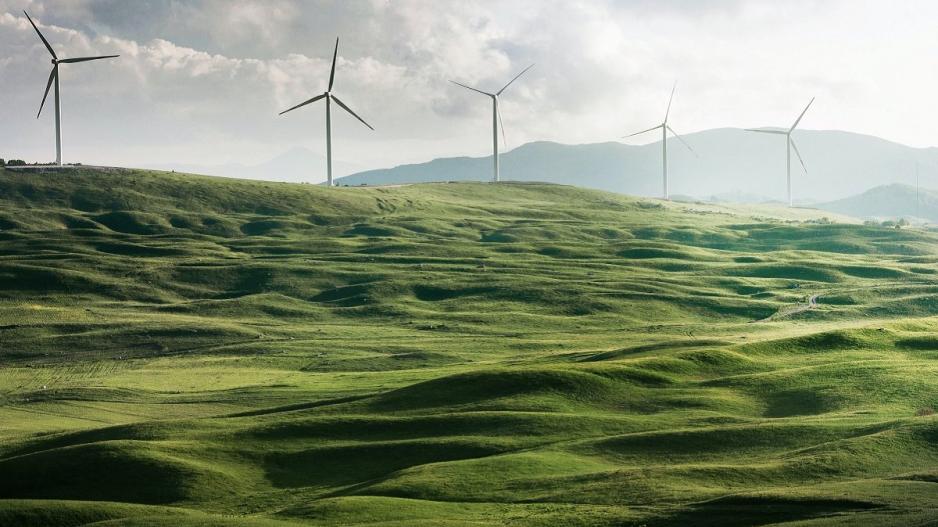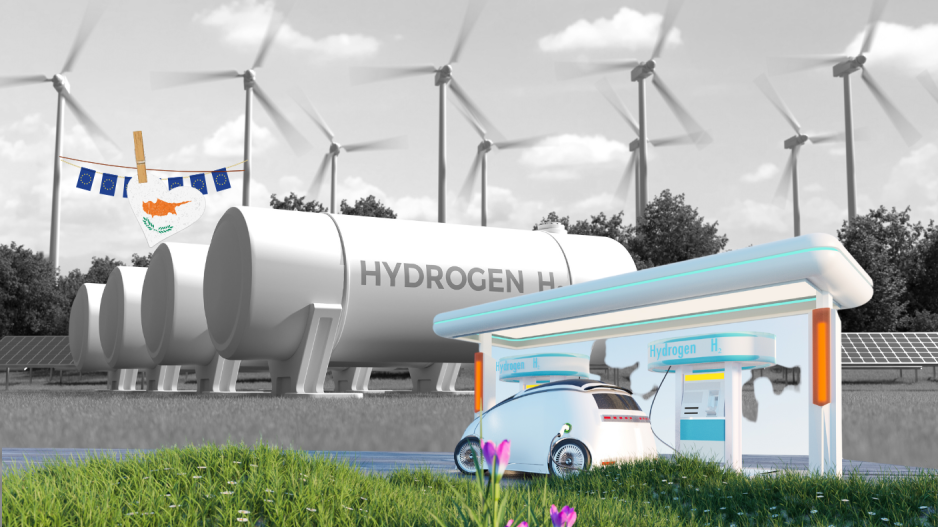EU Energy Strategy Towards Green Hydrogen and Cyprus’ Hesitant Effort to Catch Up
The world continues to rely heavily on fossil fuels to meet its energy demands. As a consequence, this dependence on non-renewable sources has detrimental effects on the environment, contributing to climate change and air pollution - among others. However, there is a growing awareness of the need to transition towards cleaner and more sustainable energy systems.
Renewable energy sources, such as solar, wind, hydro, and geothermal power, have experienced significant growth in recent years. Governments and businesses around the world are investing in renewable energy projects, aiming to reduce greenhouse gas emissions and achieve energy independence. Technological advancements, falling costs, and supportive policies have accelerated the adoption of renewable energy.
In light of these conditions, it comes as no surprise that green hydrogen is garnering growing attention from the global community amidst advancements in the realm of green energy. With some even dubbing it "the fuel of the future," green hydrogen is currently capturing the world’s attention, especially Europe’s.
Green hydrogen is a type of hydrogen (H2) produced through electrolysis, where electricity generated from renewable sources, such as solar or wind, is used to split water into hydrogen and oxygen. It is called "green" because its production does not emit carbon dioxide or other greenhouse gasses, making it an environmentally friendly alternative to conventional hydrogen produced from fossil fuels.
Green Hydrogen's potential lies in its versatility, as it can be used in various sectors such as transportation, industry, and energy storage
Although the concept of hydrogen as an energy carrier has been around for decades, the focus on green hydrogen has gained momentum in recent years. Its potential lies in its versatility, as it can be used in various sectors such as transportation, industry, and energy storage. It can power fuel cells to generate electricity, fuel hydrogen-powered vehicles, and replace fossil fuels in industrial processes.
Forecasts suggest that by 2050, green hydrogen could be produced competitively at $0.70 - $1.60 per kg, comparable to natural gas prices. Structuring bankable green hydrogen projects is crucial due to the substantial energy input required and the similarities to the fossil fuel value chain. By 2022, global hydrogen production stood at around 75 MtH2/year as pure hydrogen and an additional 45 MtH2/year as part of a gas mix, equivalent to 3% of global final energy demand. However, only about 1% of global hydrogen output was produced using renewable energy, with the majority coming from fossil fuels.

Predictions for the future of green hydrogen are optimistic. Many countries have set ambitious targets for its production and deployment as part of their climate change mitigation strategies. Europe also seeks to establish a sustainable hydrogen ecosystem that aligns with its ambitious decarbonization goals, secured energy independence, and contribution to a greener and more resilient future. Subsequently, goals for this much-touted "fuel of the future" have been elevated due to geopolitical events such as the Russian invasion of Ukraine, which have accelerated plans for swift disengagement from Russia's energy dependency.
Europe aims to produce 10 million tons of "green" hydrogen domestically while importing an additional 10 million tons by 2030
Under the umbrella of the REPowerEU initiative, Europe aims to produce 10 million tons of "green" hydrogen domestically while importing an additional 10 million tons by 2030. This transformative vision necessitates substantial investments in key hydrogen infrastructure, with estimated costs ranging from 28 to 38 billion euros for EU pipelines and 6 to 11 billion euros for storage facilities.
To realize these ambitions, Europe recognizes the need for large-scale renewable energy installations, such as photovoltaic systems, to generate the required energy for hydrogen production. Additionally, for the first time, Europe will finance renewable energy investments in third countries and develop the necessary infrastructure to facilitate the long-distance transportation of hydrogen from Africa and Asia to Europe.
Despite the EU’s growing emphasis on green hydrogen, only a handful of member states have made significant progress in planning projects involving this particular energy source. Cyprus, while engaged in cooperation with Israel regarding the ongoing endeavor to export natural gas through pipelines to Europe, finds itself grappling with multiple energy plans that have yet to materialize into concrete outcomes. One of those plans was highlighted by President Nikos Christodoulides during his address to the European Parliament, concerning Cyprus’ potential role in producing and supplying hydrogen to the Union. However, at present, Cyprus has only one green H2 related project in the works: the GreenH2CY project.
Future Fuels, a subsidiary of Ketonis Holdings, is embarking on the innovative GreenH2CY project in the Larnaca Province, specifically in the Aradippou Municipality. This endeavor has received the green light and aims to establish the first green hydrogen production and refueling station on the island. Spanning an area of 2,077 square meters in Aradippou, the project's funding comes from the European Commission's Innovation Fund, which supports small-scale, environmentally friendly initiatives. With a budget of €7.5 million, the project is set to be completed within the next 16 months and is expected to be fully operational in September, 2025.
Future Fuels: The project aims to facilitate the integration of alternative fuels into the Cypriot reality
Based on the data and information provided by Future Fuels Ltd to FFWD, the grant from the EU innovation fund is approximately 4.5 million euros. Upon completion, this initiative is expected to prevent the emission of 21.6 tons of greenhouse gases. This showcases a significant boost and advancement that the project will bring to the Cypriot reality in terms of Green Hydrogen, fostering the establishment of alternative fuels in Cyprus.
The primary objective of the GreenH2CY project is to generate hydrogen fuel that will be utilized in the transportation and industrial sectors. By employing this clean and sustainable energy source, the project aims to significantly reduce greenhouse gas emissions and eliminate carbon-intensive pollutants associated with transportation. Through installing and operating a PEM-type electrolyzer, Future Fuels will produce 150 tons of hydrogen fuel annually, equivalent to replacing 627 tons of diesel fuel. Water from tertiary wastewater treatment will be utilized, contributing to circular economy efforts.
Furthermore, an important agreement has been achieved between Future Fuels Ltd and Evergy Ltd, a private licensed electricity supplier. Evergy has expressed its readiness to establish an exclusive power supply contract once the project reaches maturity. Consequently, prior to the project's operation, a power purchase agreement will be signed to guarantee the pilot station's exclusive access to electricity generated from renewable sources. This collaboration ensures a reliable and sustainable energy source for the project, setting the stage for its implementation.
The successful operation of the first green hydrogen production and refueling station will represent a significant milestone in Cyprus' transition towards a greener future. Not only will it contribute to the country's efforts to combat climate change, but it will also promote sustainable practices within the transportation sector, offering a viable alternative to carbon-emitting vehicles. By embracing green hydrogen, Cyprus has the opportunity to demonstrate its commitment to sustainability and align itself with Europe’s green initiatives, as the GreenH2CY project serves as a beacon of innovation, showcasing the island's potential for renewable energy adoption and its dedication to a cleaner, greener future.

However, the situation does not come without challenges. Globally, green H2 lacks at the moment a mature supply chain, transportation infrastructure, and cost-effective storage and shipping methods. Scaling up production and establishing regulations and standards are additional hurdles.
According to McKinsey, a prestigious global management consulting firm, green hydrogen is on the rise as a versatile solution in a net-zero economy. Its production is projected to increase more than tenfold by 2050, serving as an industrial feedstock, fuel, and energy storage medium. The firm labels Europe as the leading force in hydrogen infrastructure development, with over 350 large-scale projects announced in 2021. The associated investment in hydrogen infrastructure is estimated to reach $500 billion by 2030, creating millions of jobs. As production costs decrease, industries like transportation are considering green hydrogen as part of their future powertrain options.
However, the industry faces challenges due to high costs and limited policy support. While 1,000 global projects have been announced, only $29 billion has been committed so far, falling far short of the estimated $20 trillion investment needed by 2050. Subsidies may be necessary to bridge the price gap with fossil fuels, as well as strong policy support, increased investments, and technological advancements in order to scale up green hydrogen and achieve its potential in addressing climate change. It goes without saying that these requirements could easily apply to the Cyprus case as well.






